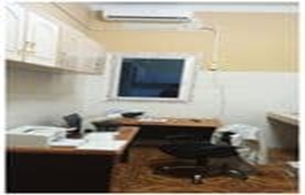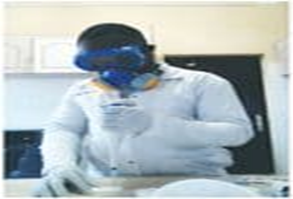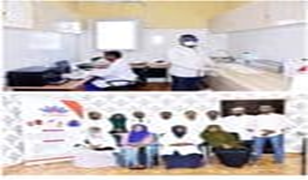Research Article
Setting Up a Cytology Laboratory for Cervical Cancer Screening in a Developing Country: A One Year’s Early Experience at a Private Facility
1Cytology Society of Uganda, Uganda.
2Levy Mwanawasa Medical University, Uganda.
3Makerere University, Uganda.
4Soroti University, Uganda.
5Alzahra Specialty Hospital, Uganda.
*Corresponding Author: Mwesigwa Boaz, Cytology Society of Uganda, Uganda.
Citation: Boaz M. Febian N., Abila D. Bary, Emmanuel O., Zahra A. Warsame. (2023). Setting Up a Cytology Laboratory for Cervical Cancer Screening in a Developing Country: A One Year’s Early Experience at a Private Facility. Journal of Women Health Care and Gynaecology, BRS Publishers. 2(1); DOI: 10.59657/2993-0871.brs.23.005
Copyright: © 2023 Mwesigwa Boaz, this is an open-access article distributed under the terms of the Creative Commons Attribution License, which permits unrestricted use, distribution, and reproduction in any medium, provided the original author and source are credited.
Received: February 06, 2023 | Accepted: February 27, 2023 | Published: March 06, 2023
Abstract
Introduction: Widespread cytology-based method of screening such as Pap smear test has significantly led to a reduction in the incidence and mortality associated with cervical cancer in many developed countries. In these countries, facilities needed for early detection of cervical cancer such as cytology laboratories are existent and generally available to their population. In a developing country like Somalia, access to cytology services for cervical cancer screening remains limited and as result majority of patients present with advanced stage disease (stage III & IV) that is too difficult to treat.
Intervention: To address this challenge, the management of AL-Zahra Specialty Hospital contracted a cytologist based in Uganda to guide in setting-up of cytology laboratory in the heart of Mogadishu, Somalia so as to provide cervical cancer screening and diagnostics services to the population. Other interventions made by the visiting cytologist involved guiding the procurement officer in the purchase of basic equipment, reagents, consumables and training of health care staff. This resulted into conducting 1020 cervical cytological tests over a period of 12months (1st September, 2018 to 30th September 2019).
Lesions learnt: In order to increase access to cytology services, we learnt that the federal government of Somalia should consider making cervical cytology (pap smear test) as part of routine screening policy for all sexually active women as part of health care package. An increase in sample volume may be improved through awareness campaigns and conducting community screening activities.
Conclusion: Somalia, a developing country has made great strides towards addressing the limited facilities for cervical cancer screening by using very limited funding. We hope that our experiences shall provide technical guidance & direction to physicians, laboratory managers and investors who wish to establish similar cervical cytology laboratories in an economically constrained low-resource setting.
Keywords: cervical cancer; cytology; tissue-tek slide
Introduction
Globally, cervical cancer is the fourth most common cancer in women with an estimated 570,000 new cases and with about 311,000 deaths in 2018[1]. Up to 85% of these new cases occurs in the low-and middle-income countries [2]. The highest incidence rates are observed in Latin America and the Caribbean, sub-Saharan Africa, and south and south-east Asia [3]. In Somalia, cervical cancer ranks among second leading cause of female cancer related deaths with an age-standardized incidence rate at 25.1 per 100,000 and a mortality rate at 20.2 per 100,000 [4] Widespread cytology based cervical screening has registered a marked reduction in the incidence of cervical cancer in developed countries. In such countries the mortality and morbidity associated with cervical cancer has also significantly reduced [5]. Access to cytology services in Somalia remains a challenge due to a limited number of pathology laboratories and trained cytologist’s personnel for cervical cancer screening. As a result of this a majority of patients are forced to seek for cytology services in other neighbouring countries such as Kenya & Uganda were resources available for screening are as well as moderately available. Patients who are unable to access these services end up presenting with advanced stage of disease (stage III & IV) that is too difficult to treat. To address this challenge, the management of AL Zahra Specialty hospital contracted a cytologist to guide in the setting up of a cervical cytology laboratory. Terms of reference involved guiding in purchase of equipment, reagents, consumables, training of smear takers & laboratory technicians. In this article we share the experiences encountered by the team in the first twelve [12] months after establishing the said cytology laboratory.
Facility description
The cytology laboratory was established at AL Zahra Specialty Hospital which is a private hospital with a bed capacity of ten [10 beds, located along Liberia road, Hodan district, Mogadishu-Somalia. The hospital receives referrals from other neighbouring private, government hospitals for cytology mainly focuses on gynaecological cytology and maternity services. The hospital also participates in community cervical cancer screening programs in other states such as Somali land & Puntland
Description of intervention
Planning and setting up
The idea to set up a cytology started as early as February, 2018 which was followed by a series of talks and contractual agreements between the management of AL Zahra Specialty Hospital and with the cytotechnologist based in Uganda. Laboratory space measuring 5 by 2 square meters was acquired at the second floor of the hospital building for setting up a cytology unit. Different suppliers were contacted for invoices on equipment and reagents from which a supplier with the least quotation was selected for the service. At the beginning of the project a total amount of 8,601 USD was mobilized by the hospital management so as to kick start the project (see Table 1). By 26th August, 2018 installations of furniture and purchase of equipment, reagents, solvents and consumables had already started after having identified a potential supplier. Equipment that was purchased included a microscope (Olympus CX 23), tissue-tek slide staining set (sakura), laptop (dell), digital eye piece camera, colour lazer printer and air conditioner (see figure 1).
Figure 1: Shows an air conditioner, Olympus CX23 microscope, laptop, printer, chairs and tables
Reagents/solvents purchased included harris hematoxylin, eosin azure 50 (EA 50), orange G6, xylene and graded alcohols (see figure 2A &2B).
Figure 2: Shows slide staining set for Papanicolaou staining. From Right to Left jars contain; 1-95% alcohol, 2-harris hematoxylin, 3-70% alcohol, 4-95% alcohol, 5-OG6, 6-95% alcohol, 7-EA50, 8-95% alcohol, 9&10-100% alcohol, 11&12-Xylene.
B: Slide staining with an entire staining area.
Due to limitation of space, the specimen processing area was combined with the reporting area (see figure 3).
Figure 3: Reporting area
In the absence of a cytologist (while on leave) a laboratory technician was trained to take images using a digital eye piece fitted on CX 23 microscope and transmit the captured images electronically to Kampala for reporting (see figure 4).
Figure 4:Shows a digital eye microscope taking photos of slides (microphotographs)
For safety purposes, personnel protective equipment such as gaggles, nasal masks and gloves was provided to the laboratory staff to minimize exposure to xylene and other toxic substances (see figure 5).
Figure 5: Shows staff conducting a procedure while wearing personnel protective equipment.
Challenges & mitigation
Somalia is a developing country with quite a high economically constrained health systems coupled with limited funding & no policies to tackle non-communicable diseases such cervical cancer. General challenges included failure to acquire local suppliers for cytology reagents and consumables. To minimize stock-outs, supplies were obtained from local distributors based in Uganda and shipped to Mogadishu via DHL. Insecurity in Mogadishu also affected the functionality of cytology laboratory as foreign workers (cytologists) were at risk of getting kidnapped by Al-Shabab militants. To address this challenge, we developed a telemicroscopy system (telecytology) where digital images (microphotographs) were sent to the cytologist for reporting in Kampala. Local laboratory technicians were trained on how to take quality images which enhanced continuity of cytology services in the absence of an on-site cytologist.
Lessons learnt
In order to reduce the growing burden of cervical cancer & other non-neoplastic diseases in Somalia, setting up a cytology laboratory proved to be highly beneficial to the population. In order to increase access to cytology services, we learnt that the federal government of Somalia should consider making cervical cytology service (Pap smear test) as part of routine screening policy for all sexually active women and focus on including this in the algorithm of the health care package. An increase in sample volume may be improved through awareness campaigns and by conducting community screening activities.
We hope that our experiences shall provide technical guidance & direction to physicians, laboratory managers and investors who wish to establish similar cervical cytology laboratories in an economically constrained low-resource setting.
Table 1: Start-up items used in setting up a cytology laboratory.
| Item | Quantity | Cost ($) | Manufacturer/Origin | Distributor/Origin |
| Equipment | ||||
| Olympus CX 23 Microscope | 1pc | 1500 | Olympus, japan | Crown Healthcare Uganda Limited |
| Digital eye piece camera | 1pc | 200 | Amscope | Net keep Healthcare Engineering, Kampala-Uganda |
| Tissue-tek slide staining set | 1pc | 2750 | Sakura, Germany | Al Zahrawi Medical Supplies, LLC/ Dubai-UAE |
| Printer | 1pc | 140 | N/A | N/A |
| Dell laptop | 1pc | 300 | N/A | N/A |
| Air conditioner | 1pc | 400 | N/A | N/A |
| Furniture (chair, tables) | 1set | 500 | N/A | N/A |
| Reagents and solvents | ||||
| Harris hematoxylin | 1ltr | 286 | RAL Diagnostics, France | Al Zahrawi Medical Supplies, LLC/ Dubai-UAE |
| EA50 Papanicolaou | 1ltr | 286 | RAL Diagnostics, France | Al Zahrawi Medical Supplies, LLC/ Dubai-UAE |
| OG6 Papanicolaou | 1ltr | 286 | RAL Diagnostics, France | Al Zahrawi Medical Supplies, LLC/ Dubai-UAE |
| Bioclear (Xylene) | 5ltrs | 150 | BioGnost, Croatia | Al Zahrawi Medical Supplies, LLC/ Dubai-UAE |
| Histanol (Ethanol absolute) | 5ltrs | 150 | BioGnost, Croatia | Al Zahrawi Medical Supplies, LLC/ Dubai-UAE |
| Biomount DPX | 500ml | 385 | BioGnost, Croatia | Al Zahrawi Medical Supplies, LLC/ Dubai-UAE |
| Oil immersion solution | 100ml | 22 | Cypress diagnostics, Belgium | Medilab Uganda |
| Consumables & accessories | ||||
| Coverslips (24x50mm) | 10x100/cs | 385 | Sakura, Germany | Al Zahrawi Medical Supplies, LLC/ Dubai-UAE |
| Pap smear kits (25 per kit) | 4 boxes | 216 | Andwin Scientific, USA | Al Zahrawi Medical Supplies, LLC/ Dubai-UAE |
| Disposable speculums | 150pcs | 283 | Advin Health Care | Laborex Uganda Ltd |
| 20 Slides folder white | 10/cs | 308 | Sakura, United Kingdom | Al Zahrawi Medical Supplies, LLC/ Dubai-UAE |
| PPE (Mask, gaggles) | 1pc | 54 | Bioptica, Italy | Histclear diagnostic supplies/ Kampla-Uganda |
| T0TAL | 8,601 | |||
Data Availability
Data is available in hard copies and can be accessed on request.
Conflict of Interest
The authors declare that there are no competing interests associated with the manuscript.
Funding
There was no source of funding or grant from public or non-governmental organization rendered towards this research.
Ethical consideration
This research followed all ethical standards for research without direct contact with human or animal subjects.
Consent
Approval to publish this manuscript and images was obtained from the management of Alzahra Specialty Hospital.
Acknowledgement
We extend our sincere gratitude to management of AL Zahra Specialty Hospital for the financial support and resources rendered in setting up the cytology laboratory. Special thanks to the Assoc. Professor Othieno Emmanuel for his continuous mentorship and support rendered towards the success of this project.
Authors’ contribution
MB wrote the manuscript. NF, ADB & OE revised the manuscript. All authors have read and approved the manuscript
References
- World Health Organization. (2019). Cervical Cancer. Geneva, Switzerland;
Publisher | Google Scholor - Ferlay J, Ervik M, Lam F, Colombet M, Mery L. et al. (2018). Global Cancer Observatory: Cervix Uteri Fact Sheet. Lyon, France: International Agency for Research on Cancer.
Publisher | Google Scholor - (2005). IARC Handbooks of Cancer Prevention, Cervical Cancer Screening, 10.
Publisher | Google Scholor - Ferlay J, Ervik M, Lam F, Colombet M, Mery L. et al. (2021). Global Cancer Observatory: Somalia Fact Sheet [Internet]. Lyon, France: International Agency for Research on Cancer.
Publisher | Google Scholor - Catarino R, Petignat P, Dongui G, Vassilakos P. (2015). Cervical cancer screening in developing countries at a crossroad: Emerging technologies and policy choices. World J Clin Oncol, 6(6):281-290.
Publisher | Google Scholor
















